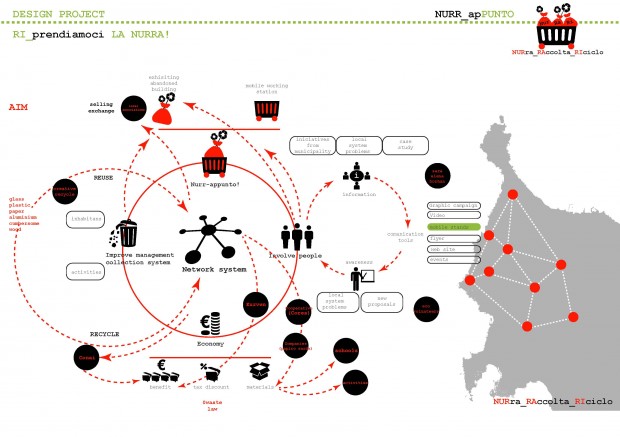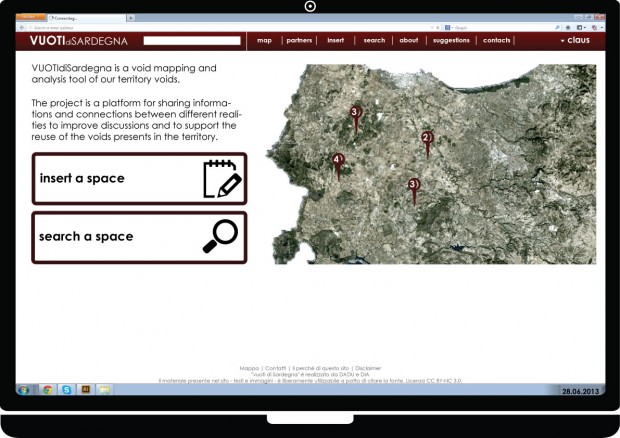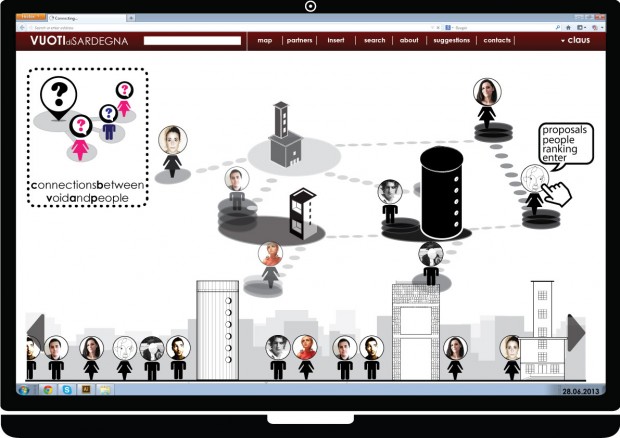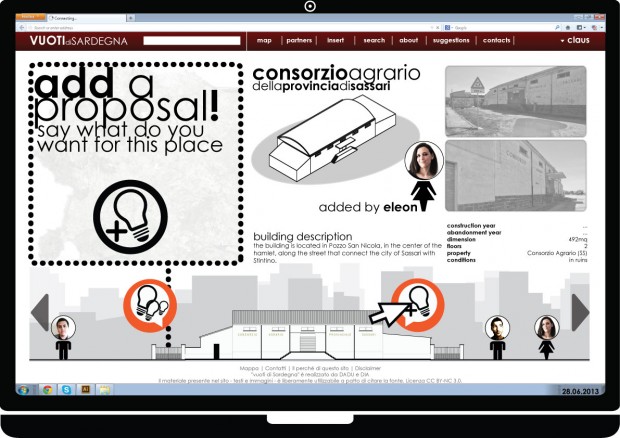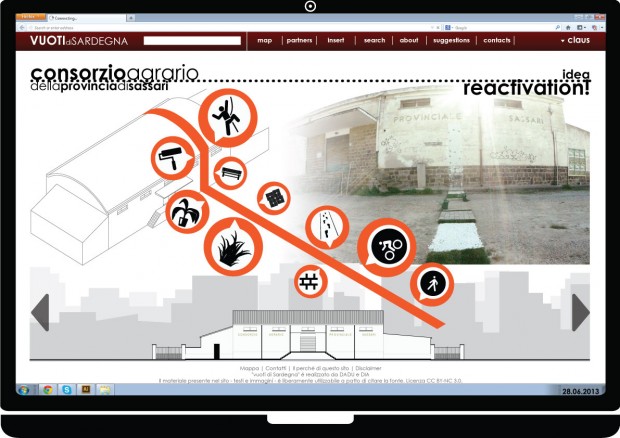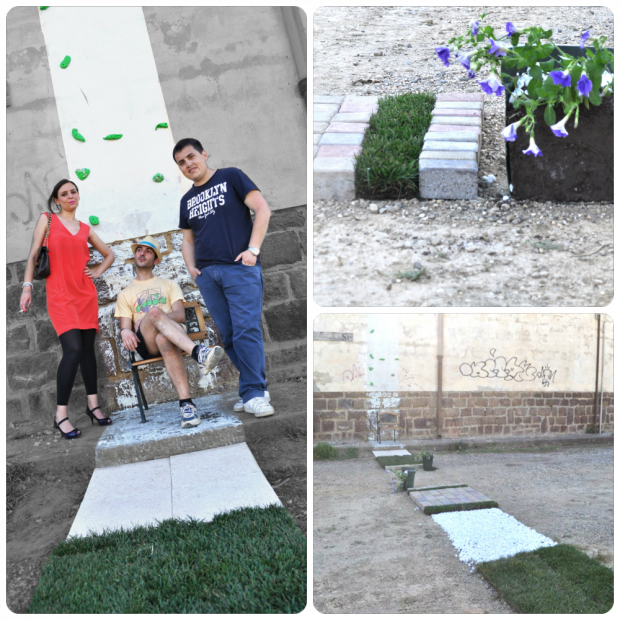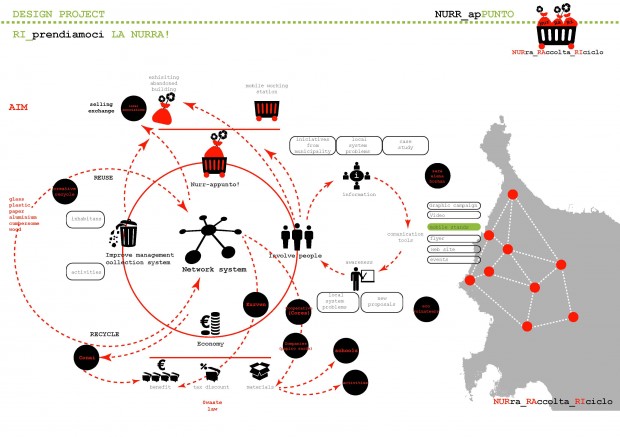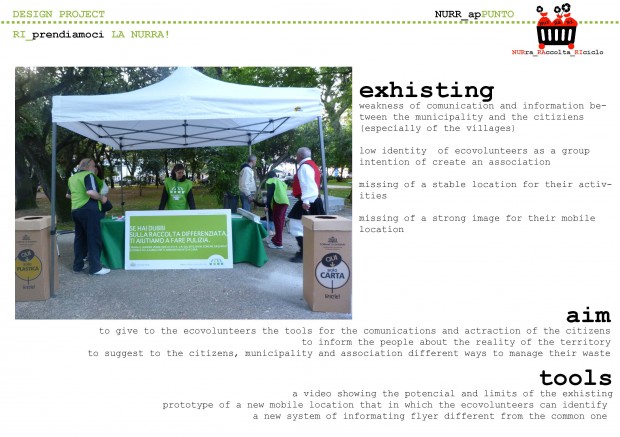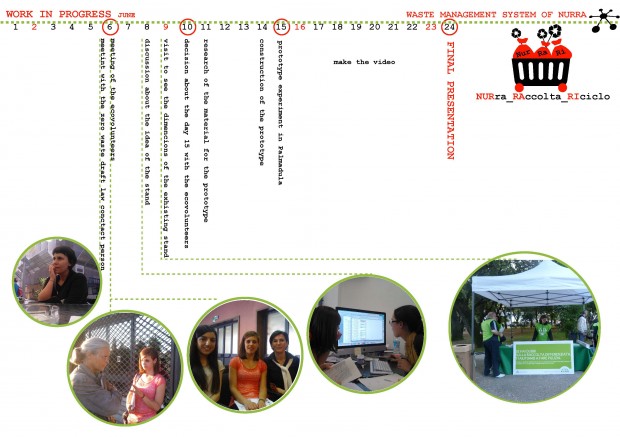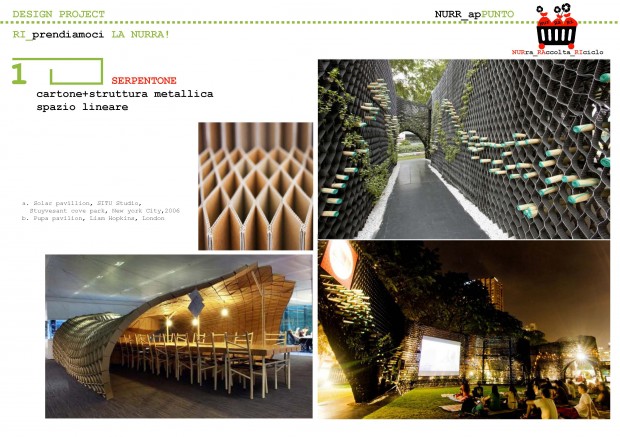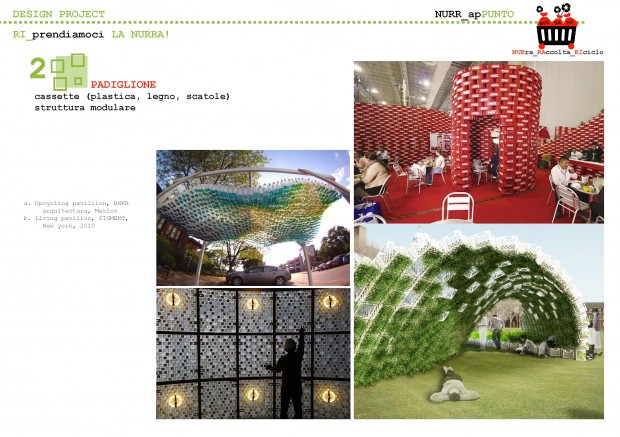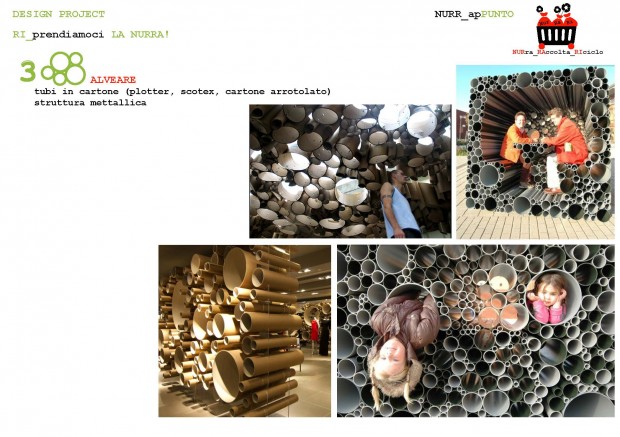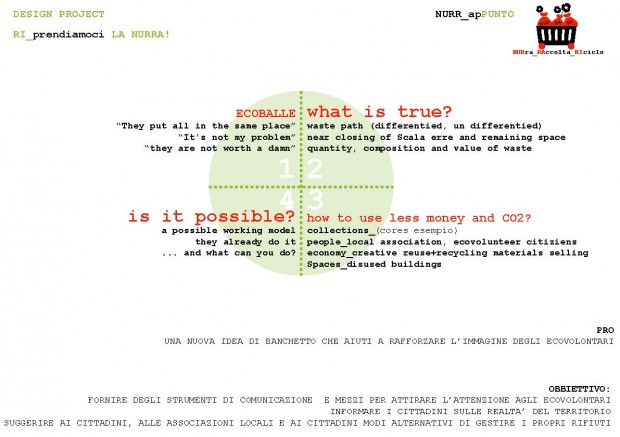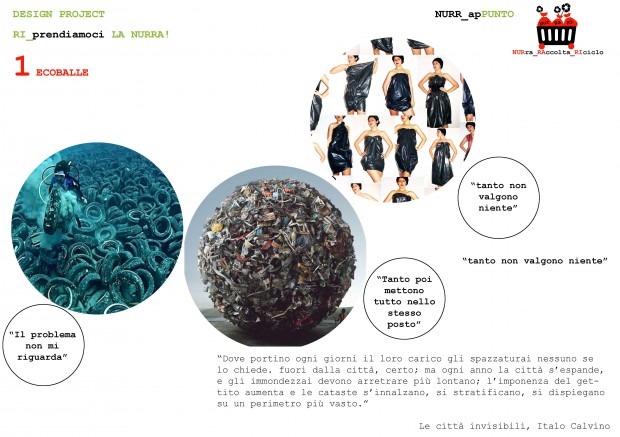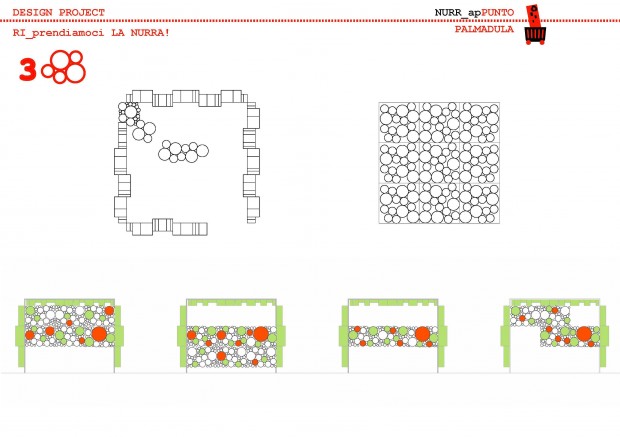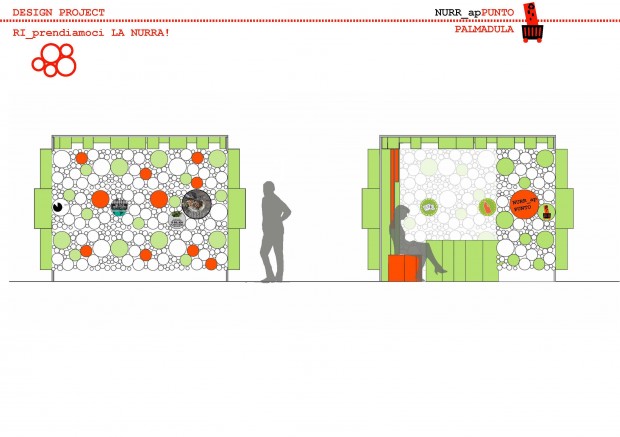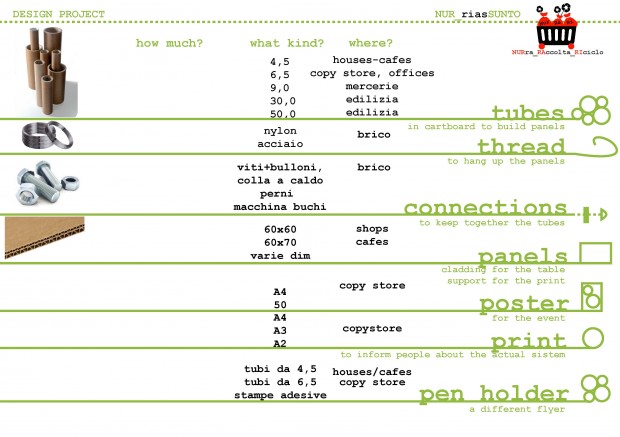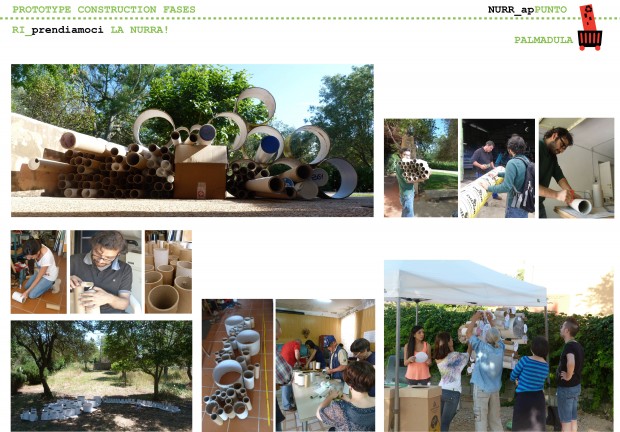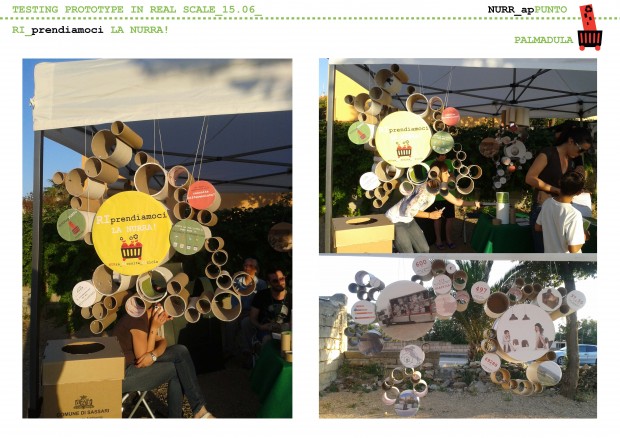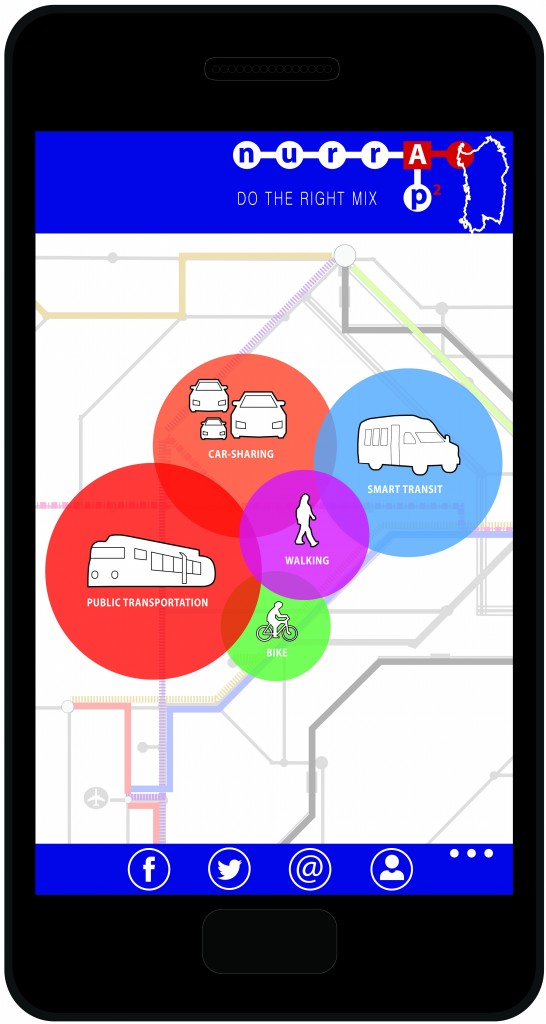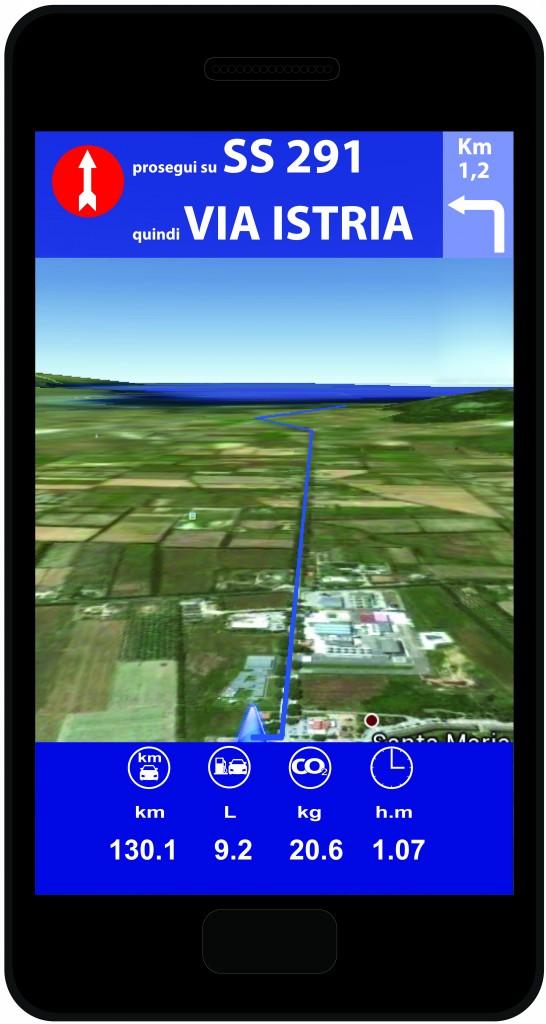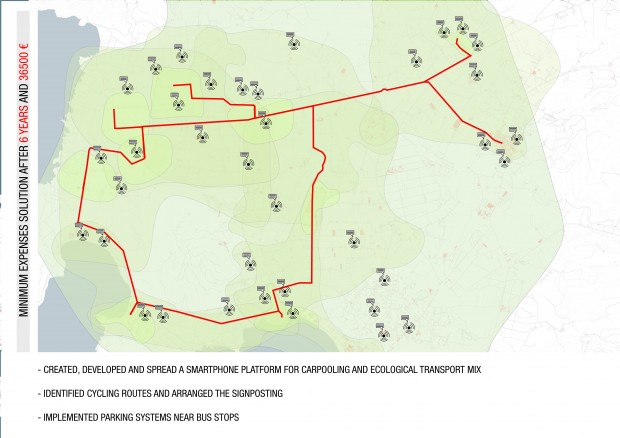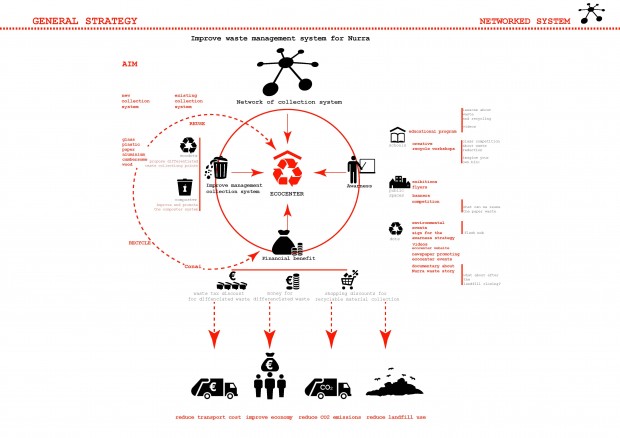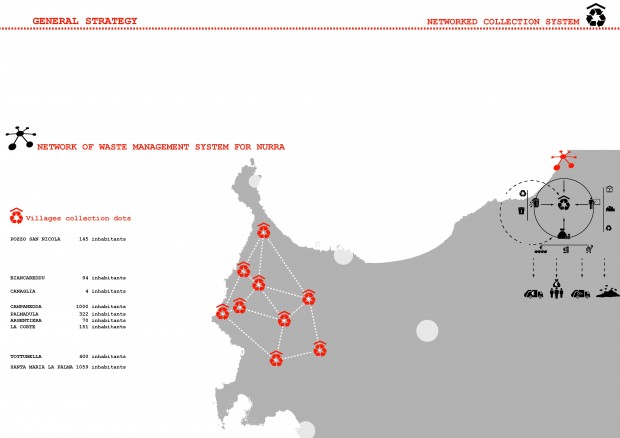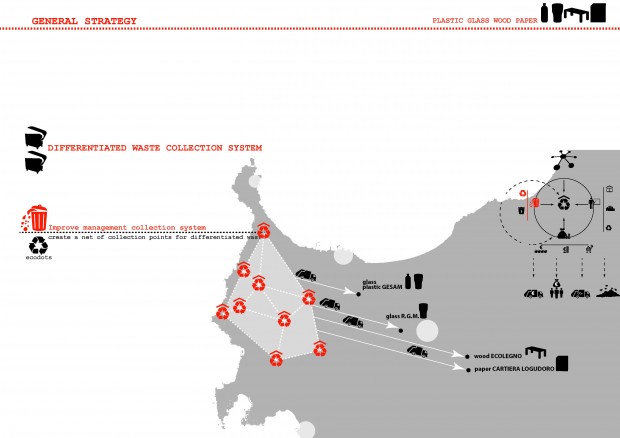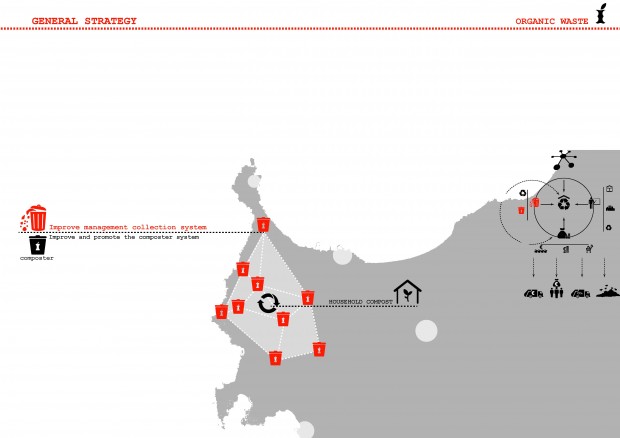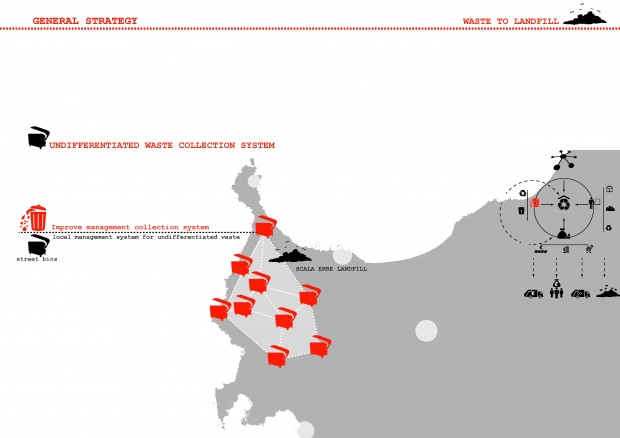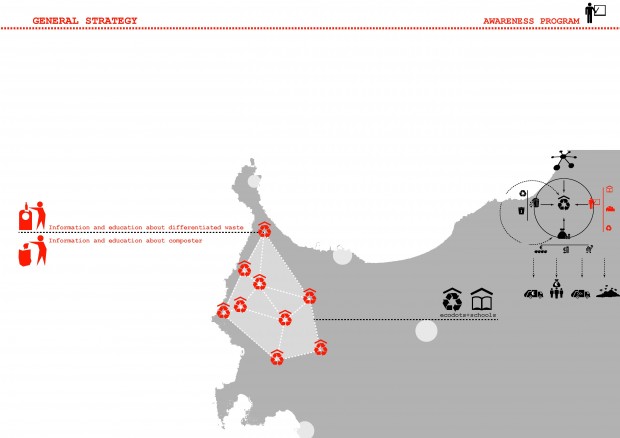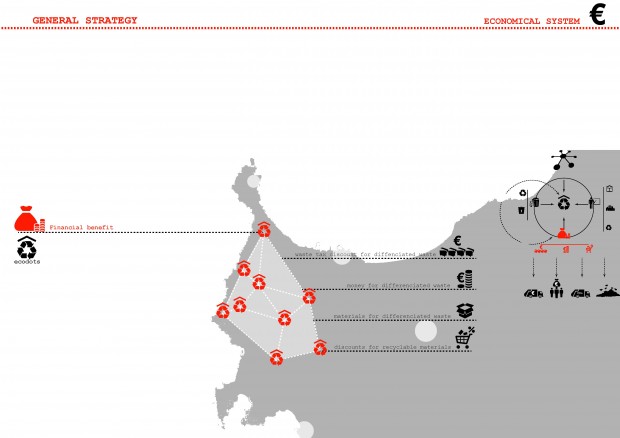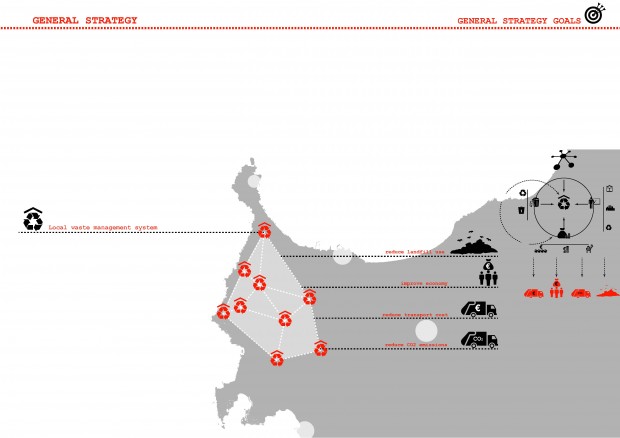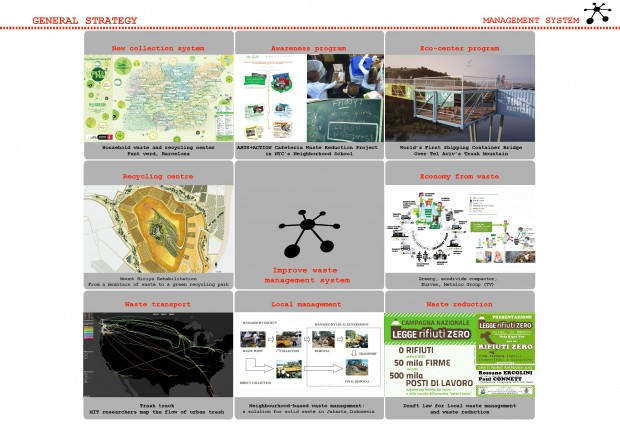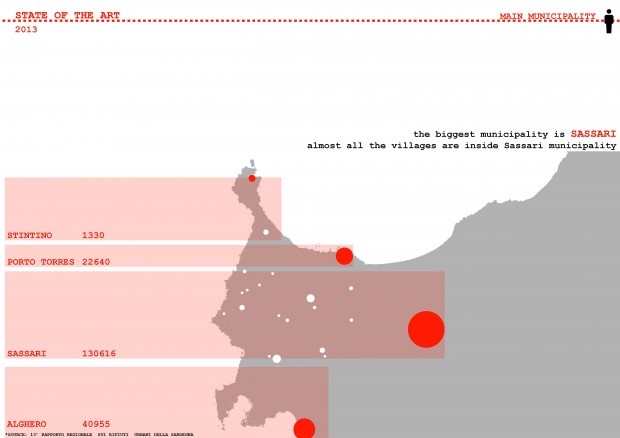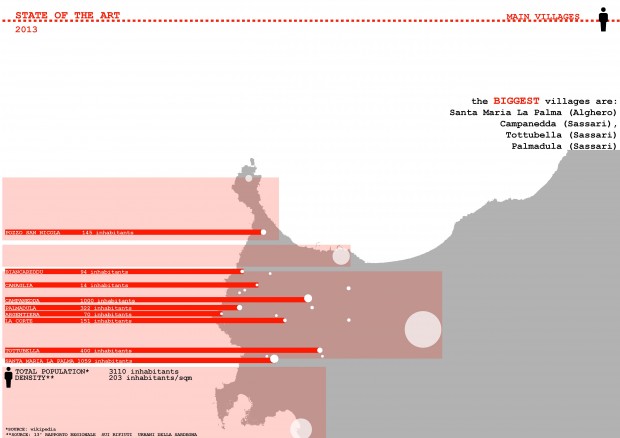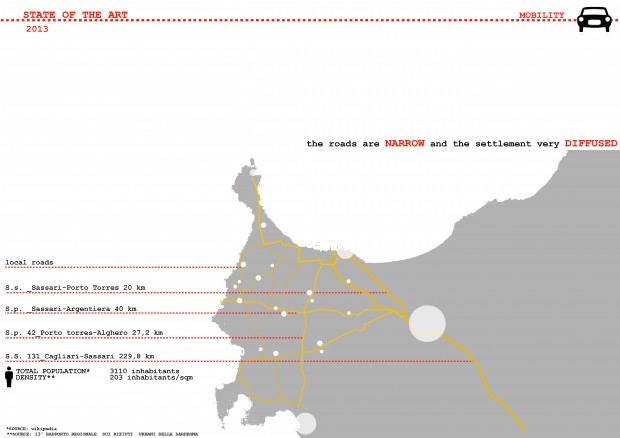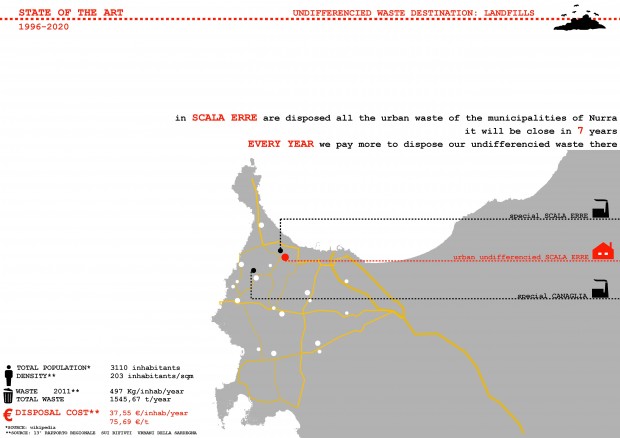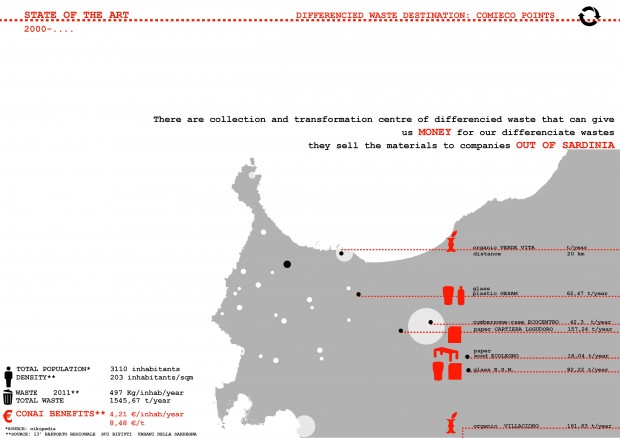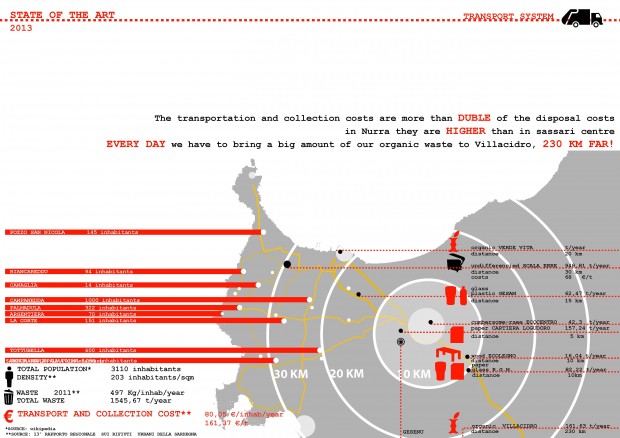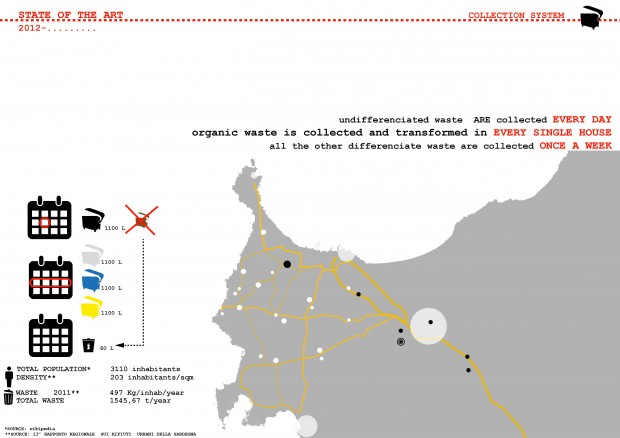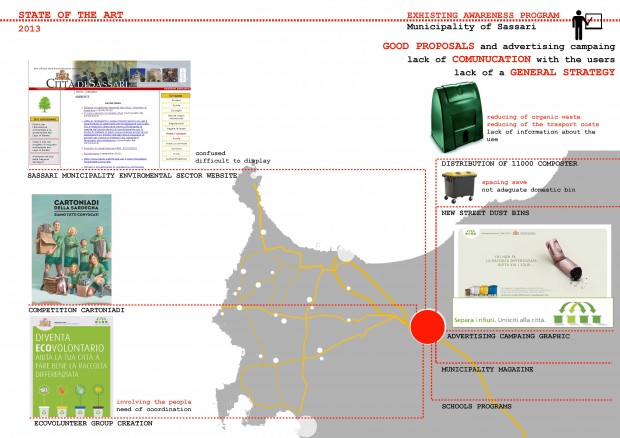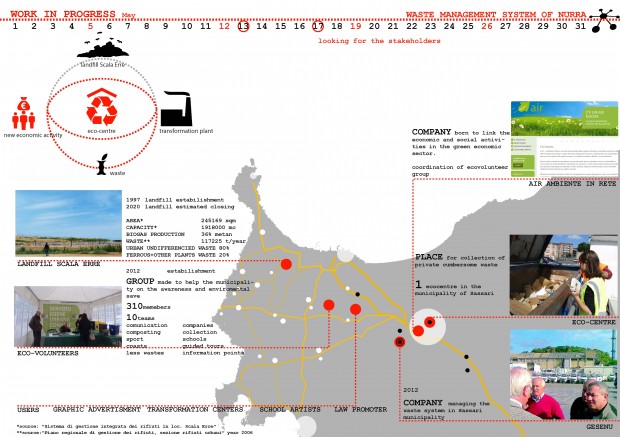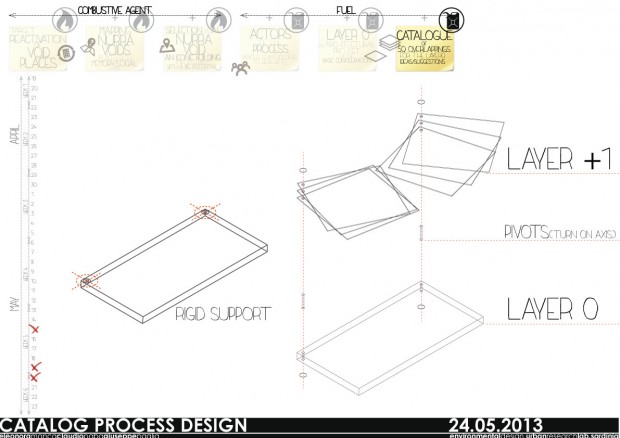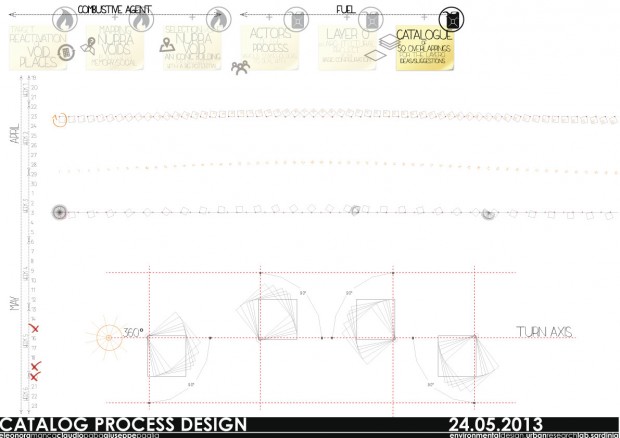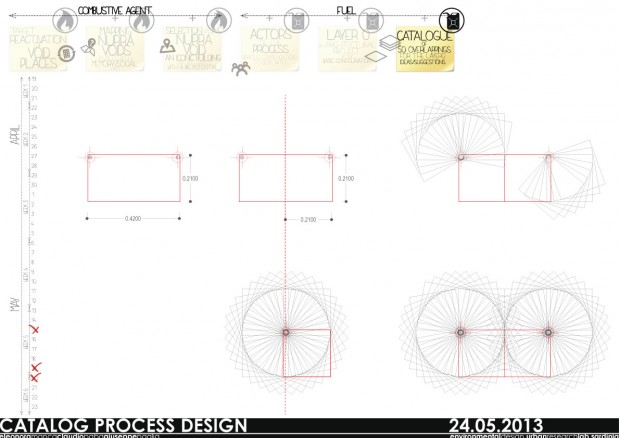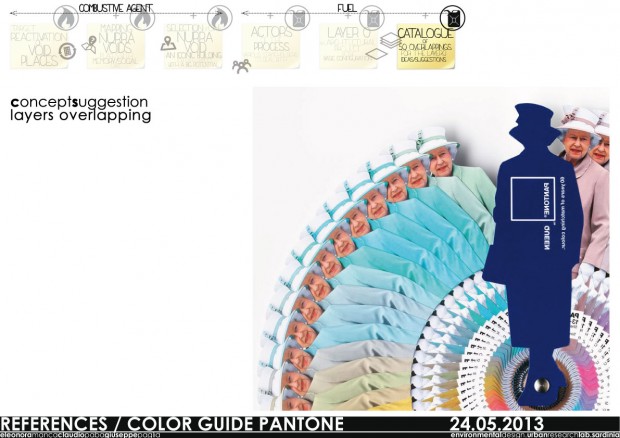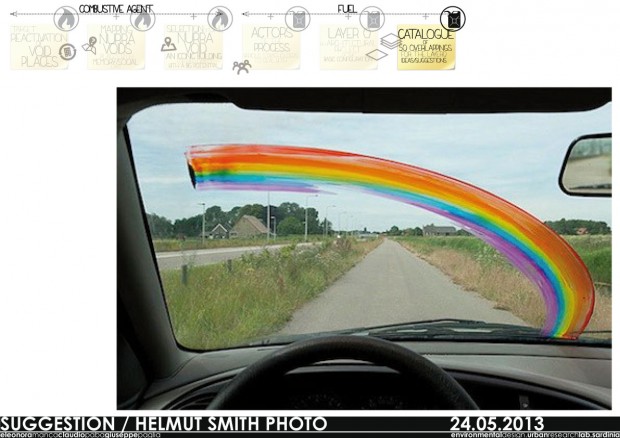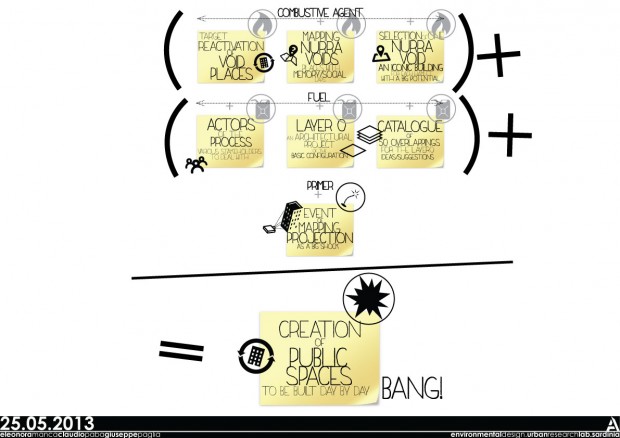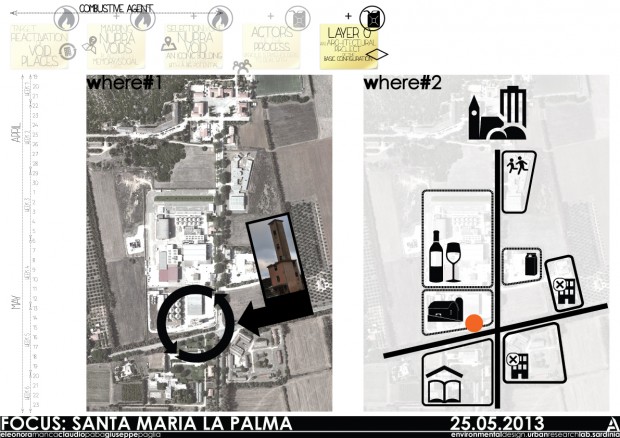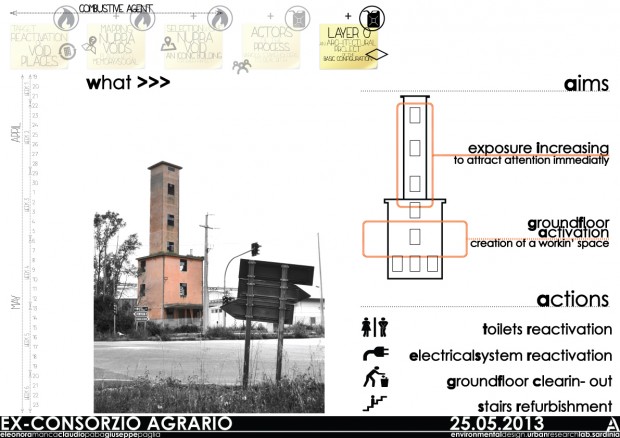Networked Urbanism
design thinking initiatives for a better urban life
apps awareness bahrain bike climate culture Death design digital donations economy education energy extreme Extreme climate funerals georeference GSD Harvard interaction Krystelle mapping market middle east mobility Network networkedurbanism nurra nurraempathy placemaking Public public space resources Responsivedesign social social market Space time time management ucjc visitor void waste water Ziyi
nurra
After our work resume, here’s our video for VUOTIdiSardegna, the Social Database for abandoned places in Sardinia.
Nurrarì is a proposed network of collection, information and transformation points in Nurra. The topic of the project starts from the problem of waste in a low density area, as Nurra. Is it possible to transform the problem of the waste in an opportunity for the territory? Can the waste be resources?
The work is divided in different phases:
1. BECOMING EXPERT_ At the beginning we tried to became experts in the topic and we started to collect data about the waste management system in Nurra.
2. GENERAL STRATEGY_ After collecting all the information we proposed a general strategy created a network of collecting point (Nurrarì) to improve the waste management system in Nurra and reduce the waste.
3. ACT NOW_ As the strategy is very general we decided to focus of one aspect: the involvement and attraction of the people through the design of a new “physical” information system, using the collected information and the existing eco-volunteers pavilion ( a simple standard mobile working station).
1.During the first part of the course analyzed the official sources we went to visit and interviewed the main authorities and companies involved.
• the manager of Scala Erre (the main solid urban waste landfill in Nurra);
• the responsible of Gesenu (company which manage the system of the waste collection and transportation);
• Sassari Municipality ( in the person of council member responsible of the environmental issues);
• the factory manager of the main collection points for the differentiated waste (Gesam, R.G.M.);
• The manager of Cartiera Logudoro (one of the few factory using recycled material);
• The referent of the draft law “Rifiuti Zero” for the Nurra area;
• The eco-volunteers (a group created by the municipality with the aim of informing the citizens about the differentiated waste).
After collecting all the information, we created a report of the real situation about the waste management system in Nurra. That report was the starting point of the project. This phase was very important because the whole system is very complicated and only a small part of the citizens really knows how it works.
We used the obtained data and we analyzed the impact in social, economic and environmental aspects. From our analysis we found some critical points, which are:
• Exploitation of natural environment to the use of three landfill site.
• Decentralized waste management system in Nurra (centered in the main city of Sassari).
• Weakness of information and communication from the municipality mismanagement of the system;
2.Starting from these critical point, we propose a general strategy, in order to involve people of Nurra through creating a network of multifunctional points inside every village (Nurrarì), encouraging the citizens to have a proper waste management system. These “Nurra points” should have 3 different functions:
a_COLLECTION of the differentiated waste and selection to reuse and recycle.
b_INVOLVING PEOPLE, by activate them into the system and improve the tools for communication and information. For example we can rethink about the existing mobile stand, used for awareness program, in a more efficient way .
c_PROPOSE A SYSTEM OF FINANCIAL BENEFIT, through the collaboration with local productive activities.
The goal of this proposed system are:
• to reduce the disposal of undifferentiated waste to the existing landfill of Scala Erre in Nurra, that will be closed in seven years;
• to improve the collection of differentiate waste;
• to decrease the CO2 emission and the costs of the transport system;
• to decrease the waste municipality fee.
3.It’s important to specify that all these benefits can be reached in the future only if all the people will take an active part. For this reason one of the function of the Nurra point of each village will be the awareness and information about the system.
This is why we chose to focus on this issue in the third part of our work.
Starting from the existing eco-volunteers pavilion, we customize it, making it an identity sign for the eco-volunteers groups, and at the same time the support for all the information about the system. The aim is to improve the information tools using it for show how the Nurra waste management system works, its critical points and its opportunities. The exhibition panels are made using cardboard tubes, according to the aim of texting all the possible use of recycled materials.
It was one of the most the most interesting part of the work, because it was not only a project but we tested it in the real word, building some of the panels with the collaboration of the eco-volunteers, and using it during one arranged day in Palmadula. Now it is only a prototype, but it can be improved and become the new eco-volunteer mobile working station.
With the findings of our research and proposal we want to make people aware of the existing problems and opportunities about the proper management of waste in Nurra.
It also can be useful for the municipality and different organizations to reconsider the management system of Nurra and communication to the citizens.
http://www.youtube.com/watch?v=hQt45hNxz0M&feature=youtu.be
Elena, Sara, Borhan
VUOTIdiSardegna is a social database born to map the Voids present in the Nurra territory and in the rest of Sardinia, and to attract attention on them giving proposals about their possible future.
The project begins from the topic of the Void and its possible interpretations. After analyzing the Void concept in culture, art and architecture, we developed a personal vision of the Void culminated in the “City of Voids”, an ideal city where every cluster corresponds to a different Void declination; in general, the Void is conceived as dynamic and moving. The advancement consists in the Void research in the Nurra region; we investigated the Nurra history and we went to the different hamlets to meet people, in order to understand how they feel the Void in their own territory: the result is the presence of the Memory Void in a context of Social Void. This outcome brought us to categorize these Voids as Potential Voids.
After the previous result and a deep research about the importance of building regeneration , we began the Void mapping, that led to VUOTIdiSardegna. The website is a platform that connects the different mapping voids realities already existing, and operating in the territory; the aim is to create the most complete database about abandoned places in Sardinia, thanks to the work of organizations like SardegnaAbbandonata and of every person and association, public and private, interested in contribute to the project. In fact, it’s a totally open website and this allows everyone to participate to the mapping process and the database construction, a social database because every attendee becomes a user linked with the voids and the other users.
VUOTIdiSardegna is set up as a tool thanks to which it’s possible to obtain different information layers about the Voids and make overlaps with them. In this way, the website facilitates the Voids use, in facts it connects empty space availability with any people need compatible with them. VUOTIdiSardegna is configured as a triple network: the Voids network, the Users networ and the Ideas network; they’re interconnected each other.
For every Void, it’s possible to see who are the users connected with it; for every user, it’s possible to see what proposal he made for that Void and for the others, and so on, in order to have connections and links between people, the Voids they mapped and the ideas they have for those Voids. In particular, every Void has its own page, where everyone – after the registration to the website and becoming a user – can make 5 simple actions:
- Add infos about the Void, contributing with images, videos and general informations
- See proposals made by other users for that Void
- Add proposals saying what the user wants for that place
- See what’s around, a list of similar examples
- See the action that was made for that void
Focusing on the action, it’s a kind of intervention on the building, in order to show a possible new life for it. In particular, our action shot for the Consorzio Agrario building in Pozzo San Nicola, a village depending on the Stintino Municipality. Since it was impossible to refresh the whole building with no resources, we provided to reactivate just a strip of it with different operations along: wall whitewash, climbing wall, a bench, the greengrass, a flooring, a bricks flooring, a path, a bikepath and the sidewalk refurbishment.
In a 80 cm strip, we gave a snapshot of a possibility for the abandoned building. The hope is to make Nurra (and Sardinia) inhabitants aware of the importance of these places, for the memory that they carry on and for their worth not only in the past but also in the future.
Actually, the website is working. It’s a testing phase and it will be followed by its implementation. We guess that it could really represent an important tool for Sardinia and for Sardinian people.
One of the most important key for a successful waste management system is the involvement of the citizens. Starting from the existing eco-volunteers pavilion, we improve the information tools using it for show how the Nurra waste management system works. The exhibition panels are made using cardboard tubes, according to the aim of texting all the possible use of recycled materials.
Nurrapp is a smartphone app proposal that contains: a social platform for carpooling, a navigator with ecological info, an interactive map with interest points focused on Nurra and a intermodal-mix software that calculates the best transport mix following various parameter like “less polluting” or “less expensive”.
We’ve analysed 2 extreme solution (minimum and maximum expense)for integrate pedestrian, cycling, carpooling and carsharing into a new public transport system in Nurra area (focus on Santa Maria la Palma).
The aim of the project is to involve people of Nurra through proposing a network of multifunctional points inside every village, to have a proper waste management system. These points have 3 different functions:
1_COLLECTION of the differentiated waste and selection to reuse and recycle.
2_INVOLVING PEOPLE, by activate them into the system and improve the tools for communication and information. For example we can rethink about the existing mobile stand, used for awareness program, in a more efficient way .
3_PROPOSE A SYSTEM OF FINANCIAL BENEFIT, through the collaboration with local productive activities.
The goal of this proposed system are:
• to reduce the disposal of undifferentiated waste to the existing landfill of Scala Erre in Nurra, that will be closed in seven years;
• to improve the collection of differentiate waste;
• to decrease the CO2 emission and the costs of the transport system;
• to decrease the waste municipality fee.
With the findings of our research and proposal we want to make people aware of the existing problems and opportunities about the proper management of waste in Nurra.
It also can be useful for the municipality and different organizations to reconsider the management system of Nurra and communication to the citizens.
The topic of the project starts from the problem of waste in a low density area, as Nurra.
We have analyzed the existing waste management system and its impact in social, economical and environmental aspect.
From our analysis we found some critical points, which are:
• Exploitation of natural environment to the use of three landfill site
• Decentralized waste management system in Nurra (centered in the main city of Sassari)
• Weakness of information and communication from the municipality mismanagement of the system
Following our general concept, here we focus on a single project tool: a catalogue of 50 ideas.
This catalogue grows out of an overlapping process, ultra-layers to apply to a basic configuration (layer O); physically is a book that plays with a rotation and overlapping of trasparent layers.
it’s time to recap our last weeks work!
first of all, this is an updated diagram of our intervention strategy:
here it’s possible to find the same concepts explained in our last post weekly update with new entries and a new set-up.
in particular, after the interviews and the void mapping and selection, here we present the first idea for the LAYER O focused on Santa Maria La Palma’s Consorzio Agrario:
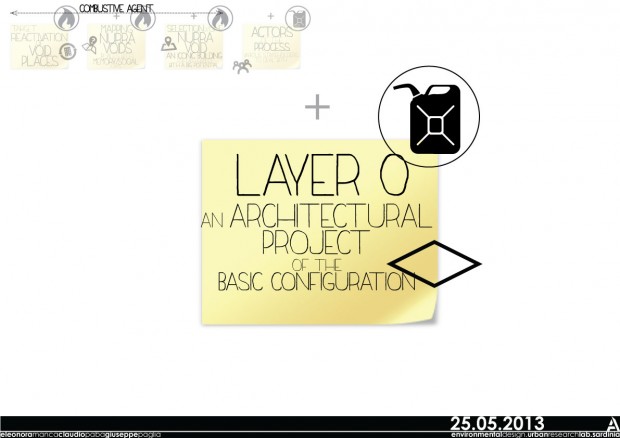
1 2 3 Next »



